The enduring style and power of the Supremes
The group’s new book, ‘Supreme Glamour’, chronicles their most famous looks, and how they broke the race ceiling, defining the fashion industry of the time
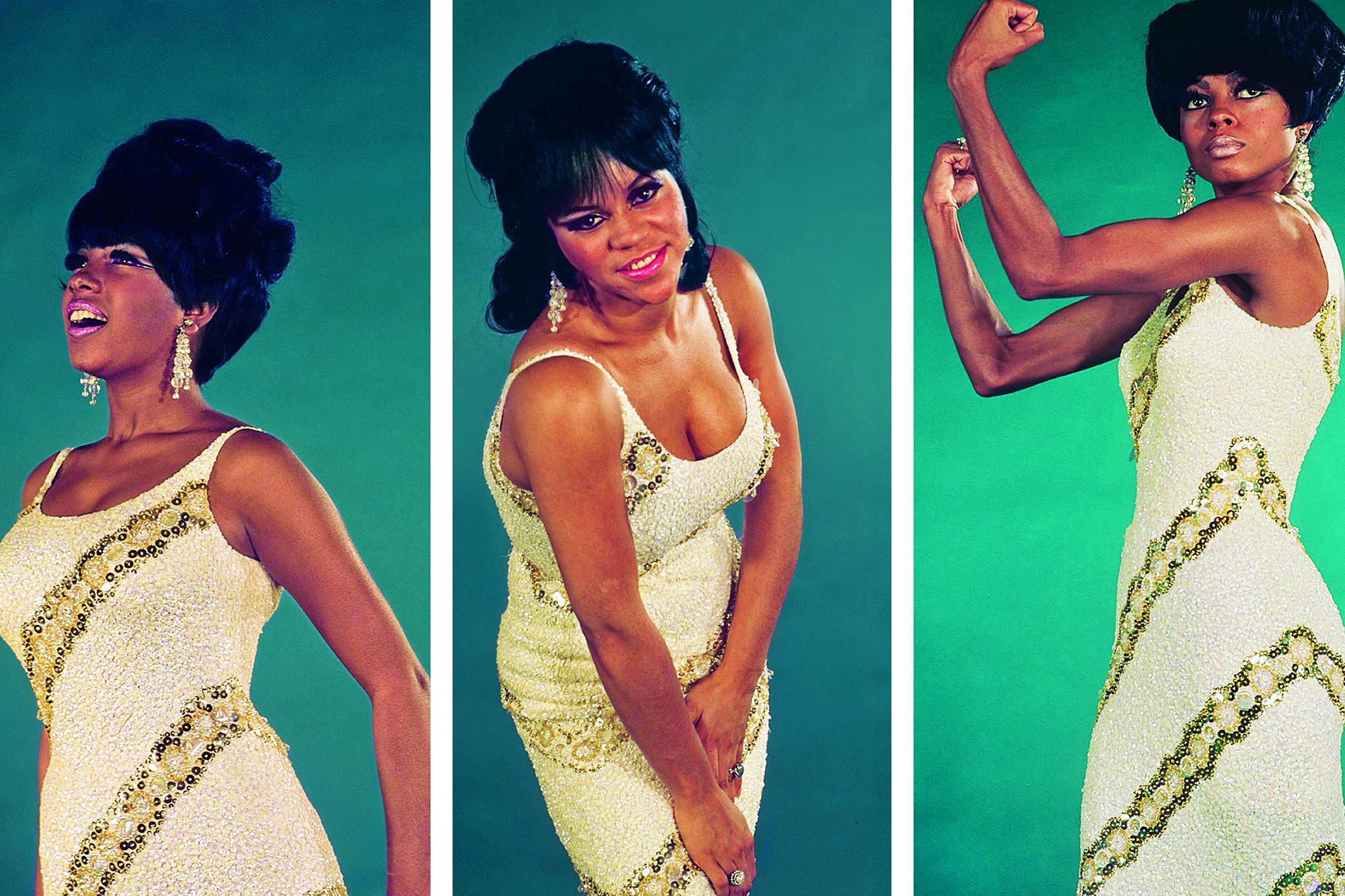
Your support helps us to tell the story
From reproductive rights to climate change to Big Tech, The Independent is on the ground when the story is developing. Whether it's investigating the financials of Elon Musk's pro-Trump PAC or producing our latest documentary, 'The A Word', which shines a light on the American women fighting for reproductive rights, we know how important it is to parse out the facts from the messaging.
At such a critical moment in US history, we need reporters on the ground. Your donation allows us to keep sending journalists to speak to both sides of the story.
The Independent is trusted by Americans across the entire political spectrum. And unlike many other quality news outlets, we choose not to lock Americans out of our reporting and analysis with paywalls. We believe quality journalism should be available to everyone, paid for by those who can afford it.
Your support makes all the difference.Sean Spicer, the former White House press secretary, is not the only contestant on the new season of Dancing With the Stars with a special kind of celebrity wattage.
Mary Wilson, a founding member of the Supremes, is also a competitor – at age 75. Viewers should get ready for liberal lashings of old-school dazzle and a sense of déjà vu. There is barely a black female pop act – Destiny’s Child, Janet Jackson, Janelle Monáe, Solange Knowles – (let alone a white one) that hasn’t taken a page from the Supremes look book.
“Millennials love our style,” Wilson said during a recent interview in London. For anyone wondering why this younger generation has joined older fans of the group’s look, a new book, Supreme Glamour, out just in time for the show, makes it all clear.
The volume chronicles how the Supremes in their original incarnation (Diana Ross, Wilson and Florence Ballard) and in their later form as Diana Ross and the Supremes (or Drats) became agents of cultural change in the 1960s, breaking the race ceiling by weaponising fashion and defining the way many women – black women, white women – wanted to look. It has photographs of mannequins in 13 of their designs, plus dozens of concert snaps, promotional portraits, and album and magazine covers. It is replete with seed pearls and mushroom pleats.
Before the Supremes, as Harold Kramer, the former curatorial director of the Rock & Roll Hall of Fame in Cleveland, notes in the book, no black act “had ever set out to utilise visual signifiers that made them palatable to a white audience”.
We were role models, what we wore mattered
Wilson agrees. “Our glamour changed things,” she says. She is wearing all black – leggings and a stretch top with cold-shoulder cutouts – and one of her many wigs, a dead-straight chestnut number with full bangs. “We were role models,” she continues. “What we wore mattered.”
Her claim is that she and her partners knew exactly what they were doing from the beginning. Wilson says that when she, Ross and Ballard were signed to Motown Records in 1961, they already had style. “They had a lot to work with,” she says. “As Maxime Powell, who ran the label’s famous finishing school, used to say: ‘You girls are diamonds in the rough. We are just here to polish you.’”
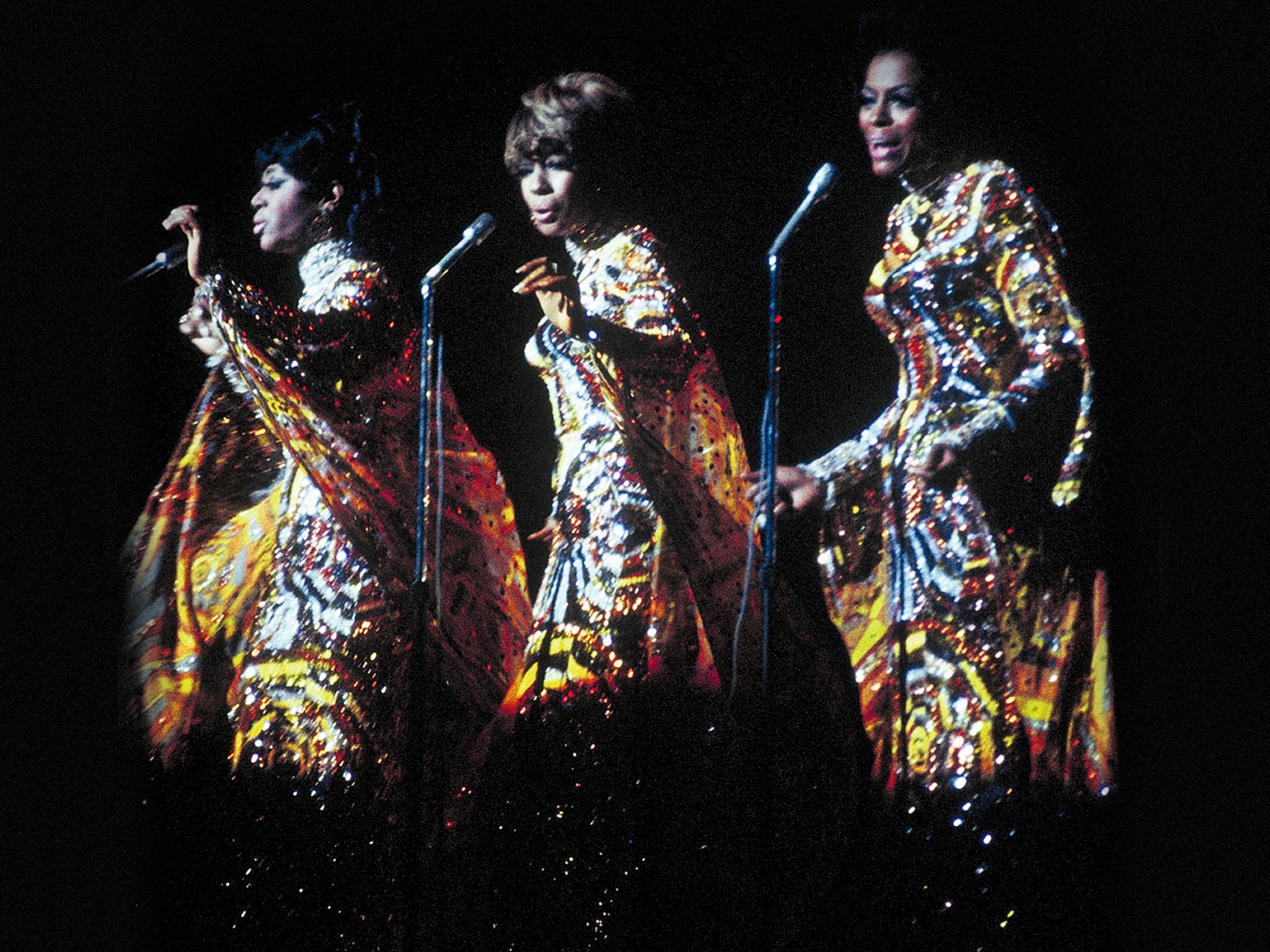
Wilson remembers that one of the earliest Supremes dresses, with a fitted bodice and stiff balloon skirt, “Diana and I sewed from Butterick patterns.”
When the Supremes broke in 1964, black singers like Lena Horne and Eartha Kitt performed in deliberately seductive evening dresses, but they were older, solo artists. Wilson and her colleagues were barely out of their teens and wielded the visual power of three, often in grown-up second-skin gowns freighted with beads and sequins.
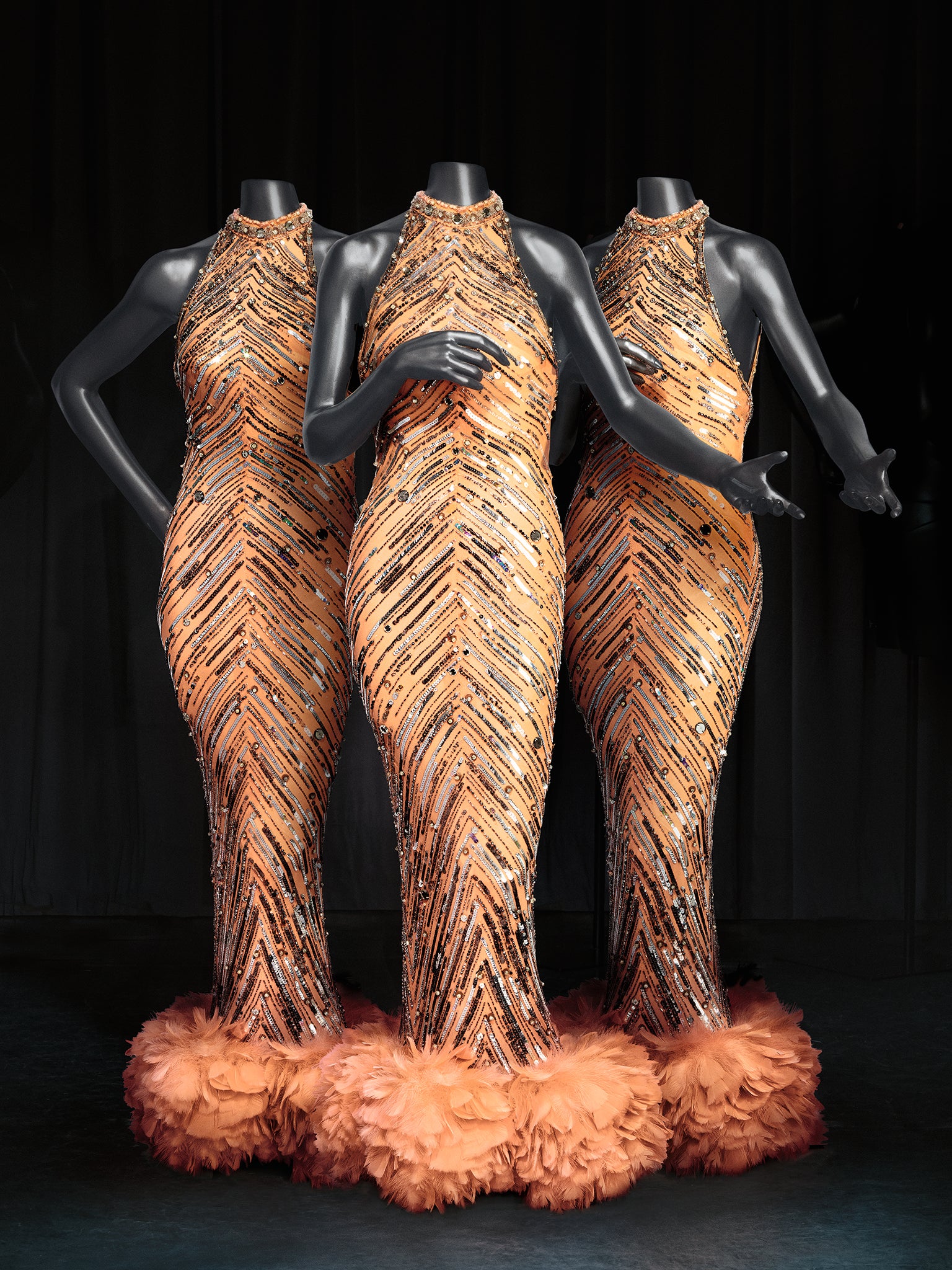
Drats maximised the look with increasingly baroque confections, some with improbable wings and trompe l’oeil jewellery, like paste crystals sewn into the neckline. Anyone who saw them live will recall the frisson produced by such young women in such sophisticated designs. Then, just when you thought you had them figured out, they turned up on The Ed Sullivan Show in 1969 in fantastical, swishing ponchos and pants seemingly made of dégradé tinsel.
For Whoopi Goldberg, writing in the foreword of Wilson’s book, the Supremes “were three of the most beautiful women I had ever seen. These were brown women as they had never, ever been seen before on national television”. Goldberg says she was encouraged to think that “I too could be well-spoken, tall, majestic, an emissary of black folks” who, like the Supremes, “came from the projects”.
These were brown women as they had never, ever been seen before on national television
Oprah Winfrey had similar memories, as recounted in Diana Ross: A Biography by J Randy Taraborrelli. “You never saw anything like it in the 1960s – three women of colour who were totally empowered, creative, imaginative,” she is quoted as saying. As a 10-year-old black girl “to see the Supremes and know that it was possible to be like them, that black people could do THAT...”
Many of the dresses in the book are owned by Wilson, although others are held by the Motown Museum in Detroit.
Wilson wants them back. She says she has “proof that the clothes were debited from the Supremes account at Motown”, meaning that she and her cohorts paid for them.
It is apparent in the book that 1967 was the turning point for the Supremes – the year everything changed. The wigs became bigger (and more expensive), the false eyelashes longer, the chandelier earrings heavier. Ballard was replaced by Cindy Birdsong (cue Dreamgirls), and Ross now had top billing.
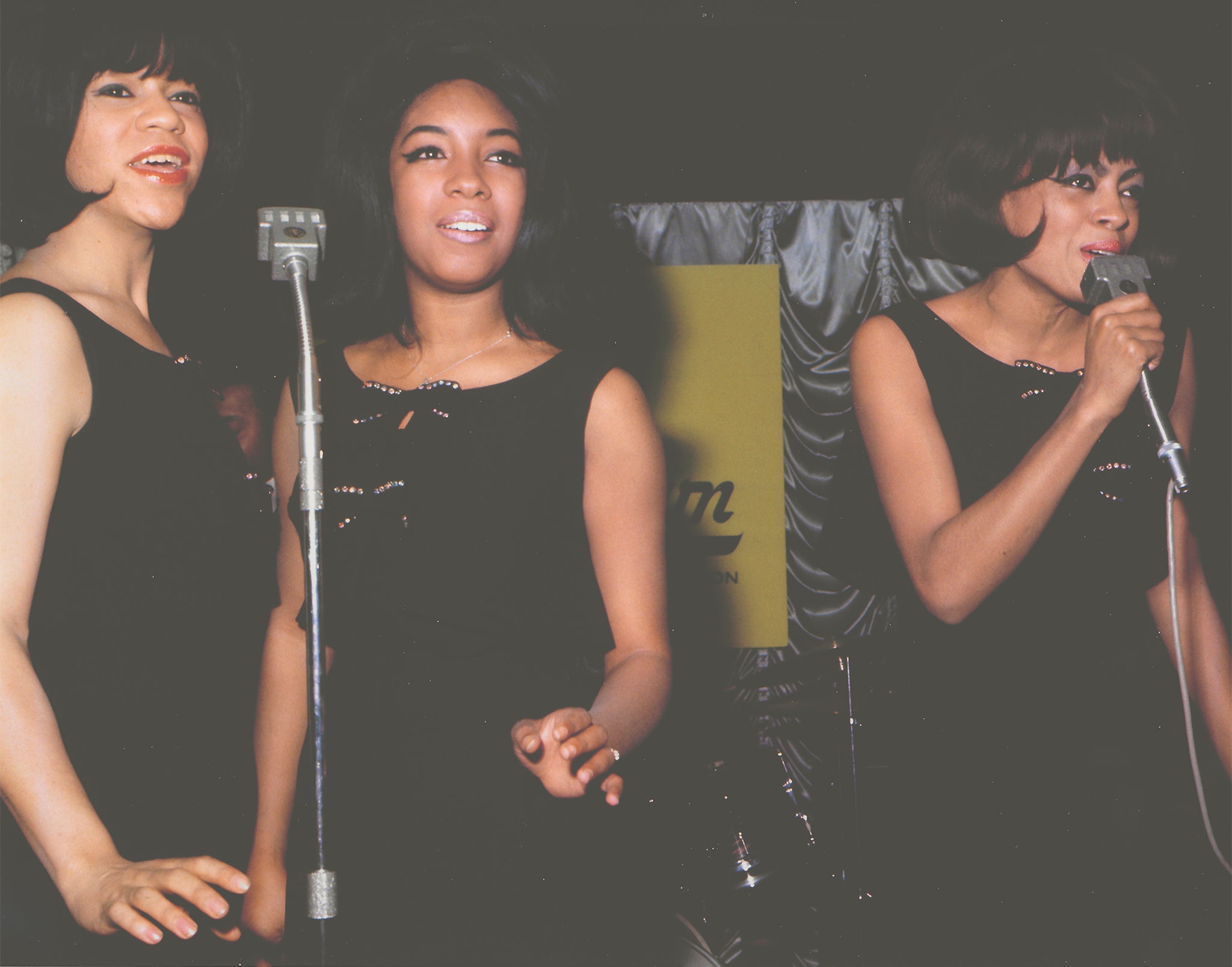
Indeed, Wilson might have read Ross’s ascension in the seams (or accessories): in the first Supremes publicity still, Ballard and Wilson wear two rows of pop pearls, Ross three.
The personnel shake-up and change from the Supremes to Diana Ross and the Supremes triggered something of a steroidal makeover, with high-end off-the-rack styles and gowns designed expressly for the women, although some of them were slow to retire their bullet bras.
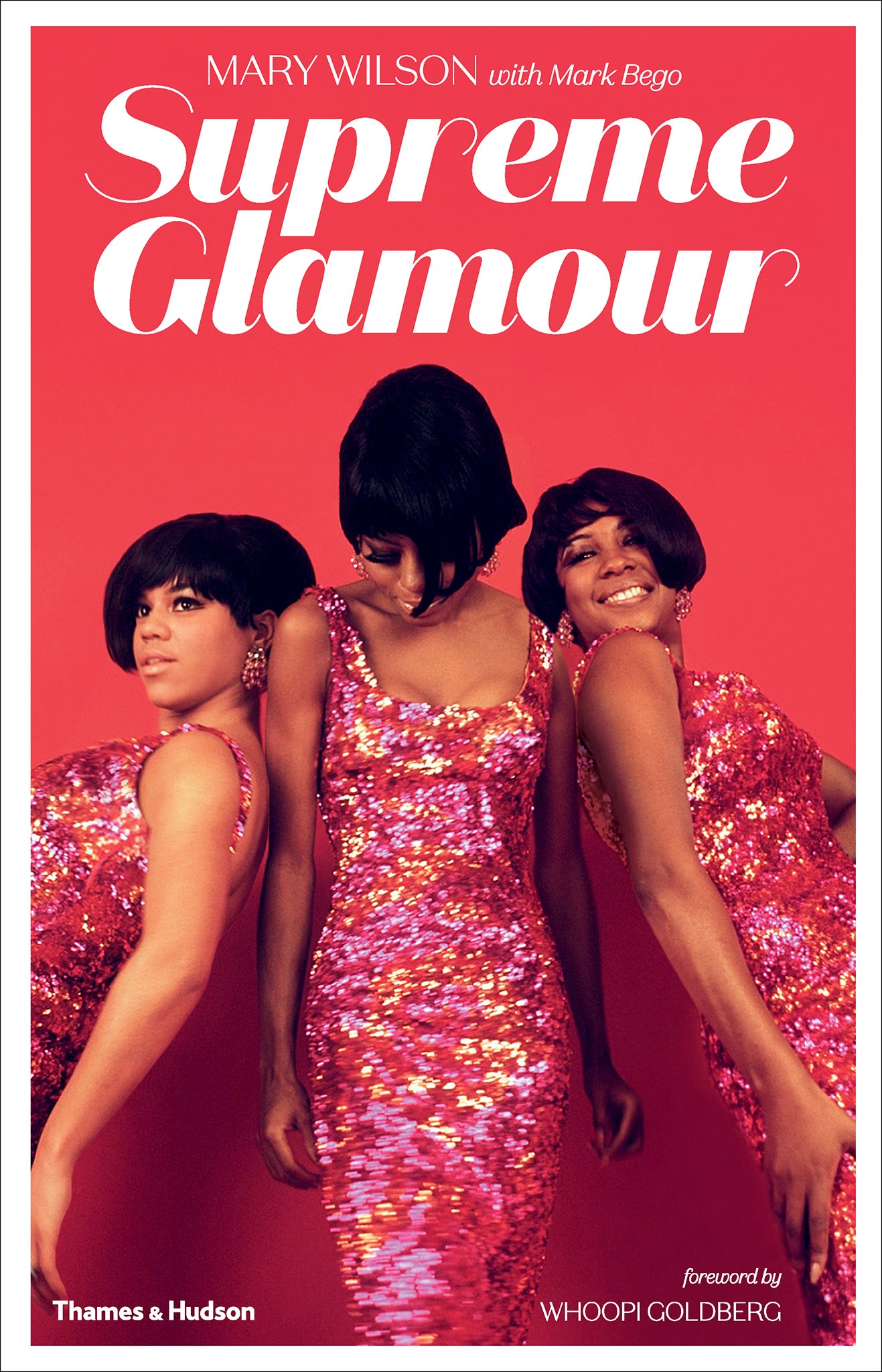
Wilson recalls that there came a point when what they wore was nearly as important as their music. “We were so in demand – we needed an endless supply of great high fashion,” she says. “Stores would stay open late just for us so we could shop privately.”
Featured in Supreme Glamour are the salmon halter-neck gowns Bob Mackie created for On Broadway, the 1969 television special with the Temptations. Dyed-to-match turkey feathers circle the hems, and broken lines of silver sequins march up the front and back of the dresses in an inverted “V”. Because they were bias-cut, as Mackie explains in an interview, “they open like a Chinese puzzle and cup at the knee, holding you in”.
“Diana Ross and the Supremes are legendary, when you think of how they’ve been knocked off and imitated,” he adds. “They were the best pros I’ve ever seen because they did nothing but work and learn.”
Oscar de la Renta has an uncredited cameo as the creator of a paisley mini dress shot with gold rivets. But many of the designers and labels in the book are obscure: LaVetta, Michael Travis, Gene Shelley.
He may be little known, but Travis, who had worked for Pierre Balmain and Jacques Fath in Paris after the war, was the true architect of the Drats image. For “TCB: Takin’ Care of Business”, the companion special to On Broadway, Travis created the defining gown of the Supremes franchise: a high-neck long-sleeve sheath etched with a prismatic web motif in shades of bronze and copper, repeated on sheer capes attached to the full length of the sleeves. By exposing only their heads, hands and feet, he isolated their signature movements.
Supreme Glamour includes costumes from after Ross left the group in 1970, and it reverted to the original name with Wilson, Birdsong, Jean Terrell and a revolving door of replacements, but most are less memorable. As the trio lost steam, so did their visuals. One group of dresses probably says more than any other about the queens of Motown and their relationship to fashion and power: the pink caftans with rainbow wings they modelled on the cover of their 1968 recording of the Funny Girl score. They were created by James Galanos, otherwise known as the favoured designer of the clotheshorse wife of the then governor of California, Nancy Reagan.
© New York Times
‘Supreme Glamour’ by Mary Wilson, with Mark Bego, is published by Thames & Hudson, £29.95.
Join our commenting forum
Join thought-provoking conversations, follow other Independent readers and see their replies
0Comments